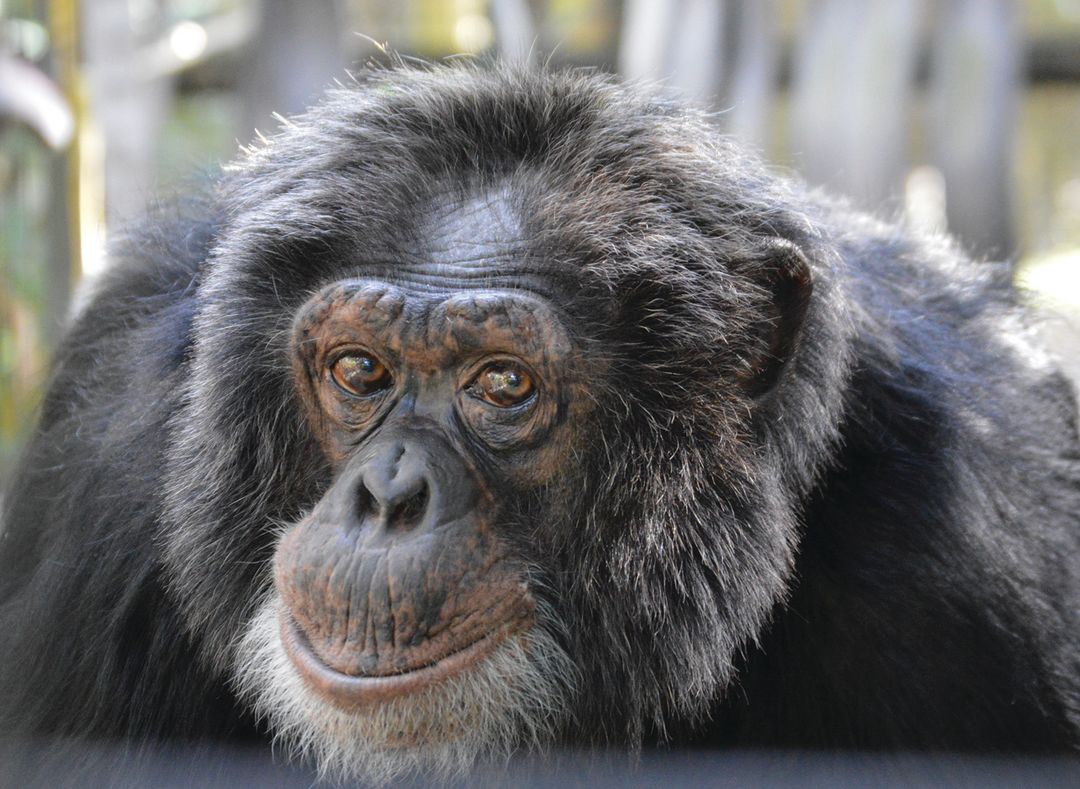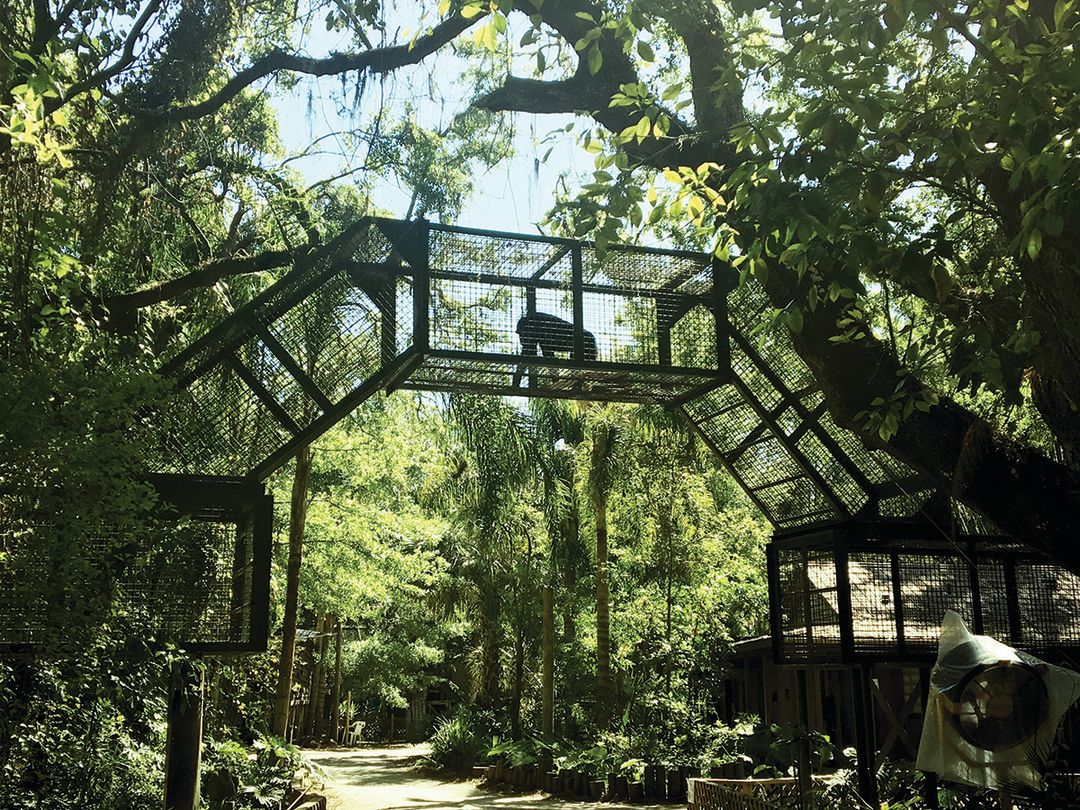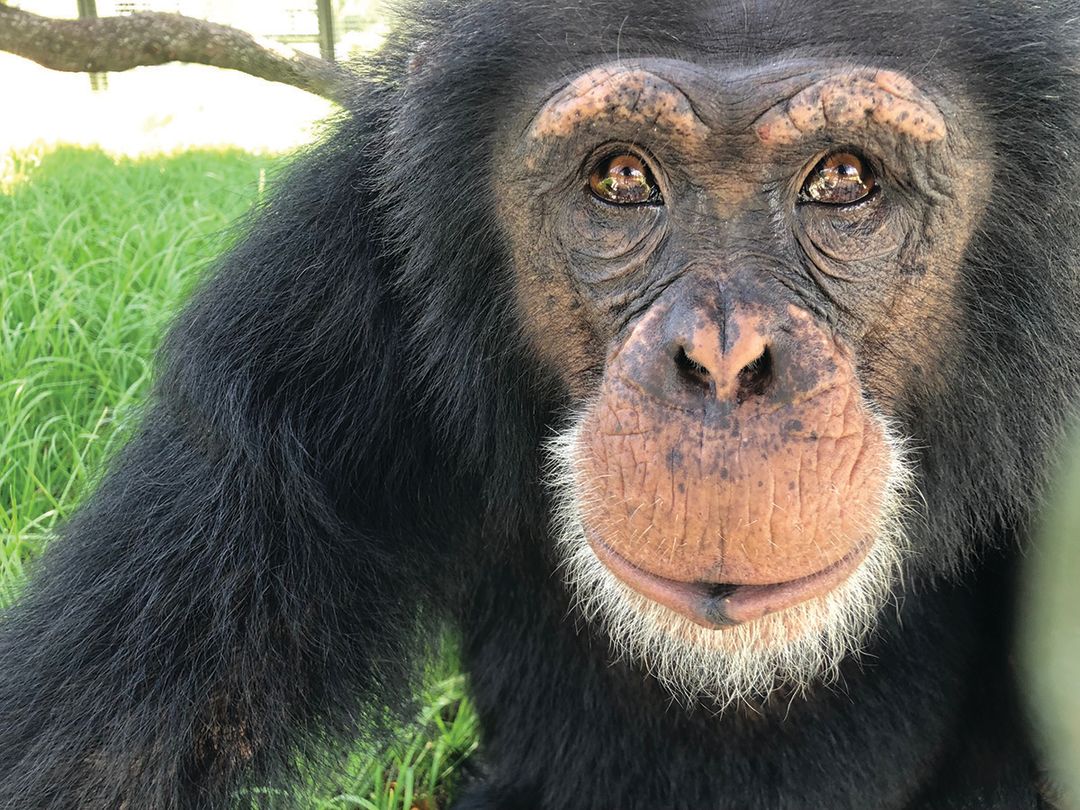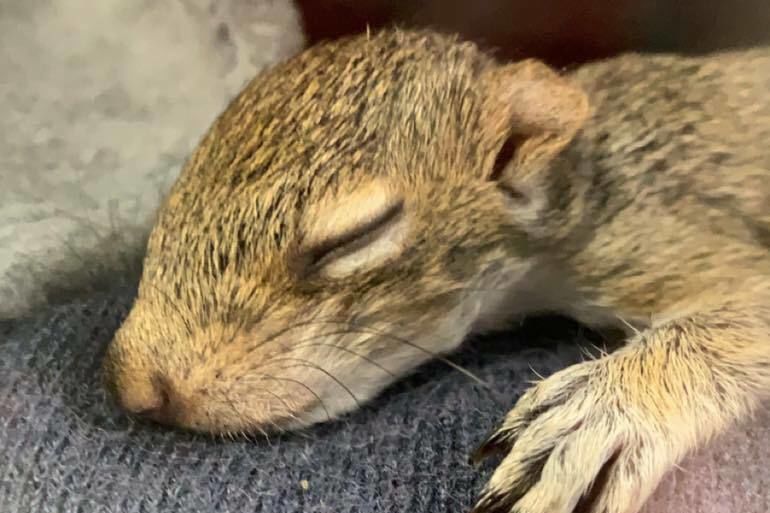Southwest Florida's Center for Great Apes Celebrates Its 25th Anniversary

Bubbles, who once lived with Michael Jackson
Image: Courtesy Photo
Just about 55 miles northeast of Sarasota, a group of ex-Hollywood actors have retired under the cool canopy of a 20-acre oak hammock. You may not know their names, but you’ve probably seen their performances. There’s Ripley, who acted alongside Jerry in an episode of Seinfeld, and Tango, who karate-chopped cherries in a juice commercial from the early 2000s. The superstar among them, Bubbles, wasn’t an actor per se, but earned celebrity status when his owner, Michael Jackson, paraded the ape around in kid’s overalls and a red-and-white striped shirt.
Welcome to the Center for Great Apes, a sanctuary in Wauchula, where 52 chimpanzees and orangutans live out their twilight years away from all the glitz and glamour. This year, the Center celebrates 25 years as a nonprofit and hosts its annual holiday open house, where donors can come visit the apes, on Dec. 15.
It started in 1993 when Patti Ragan, a young owner of a temp agency, was helping raise apes at a tourist attraction in South Florida. She knew they deserved a better life. At the time, only one accredited chimp sanctuary in the United States existed, and none could care for orangutans, so she started her own.
Chimps and orangutans can live 50 to 60 years in captivity, but by age 8 they’re too strong and stubborn to be handled safely. At the sanctuary, 16 steel-wire mesh enclosures—some as big as mansions—serve as habitats, connected by a network of aerial chutes that let the apes strut amongst the treetops.

Part of the extensive network of habitat enclosures.
Image: Courtesy Photo
Caring for an ape ain’t cheap, each costing around $20,000 per year. The enclosures alone run from $100,000 to $900,000, depending on size. Michael Jackson’s estate recently gifted $100,000 to help build a new enclosure, and celebrities like Bob Barker have also pitched in, but much of the Center’s financial support comes from its annual members, who pay $50 (individual) to $150 (family) for memberships, which include invitations to events such as this month’s open house. The Center is closed to the public.
But people like Gloria Moss, a retired competitive dancer in Sarasota, visit a couple times a year. She’s supported the Center with annual donations for the past two decades. “I love these animals and I love what Patti does,” Moss says. At past events, Moss purchased a few paintings made by the apes during their art enrichment sessions. They’re no Picassos but, in 2013, Ripley, from Seinfeld, won third prize in the Humane Society’s Chimpanzee Art Contest.

Kenzi
Image: Courtesy Photo
Ragan lives at the Center, where, at night, long calls from male orangutans reverberate off the surrounding orange groves like giant water droplets. It’s her home and yet, she says, “the good news is there’s an end in sight.” Roadside zoos are shuttering. Biomedical research on apes is phasing out. But Ragan still has her eye on apes stuck in captivity—and she knows just the place for them to go.



